Sort the Court
The game is about ruling an underdeveloped kingdom to prosperity by saying yes and no. The game does not require any mechanical skills from the player as in proficiency with the keyboard and the mouse. The binary nature of the game makes it less threatening and more interesting. The game takes place in a palace where the kingdom can be seen. There are three features of the kingdom visible to us: money, happiness, population. Each day random guests visit and make inquiries to the king which is the player. Saying yes or no have a long-lasting effect on the evolving story throughout the game while it also has a short-term effect on the happiness, money, population. The game area develops as the game progresses, the richness of the kingdom or the development of the city by the time can directly be observed:
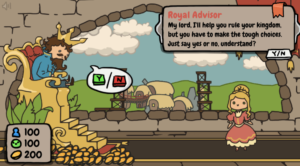
The beginning of the game
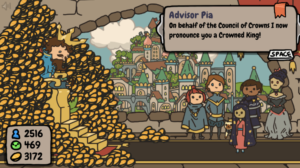
Towards the end of the game
The game design is minimalistic in a sense that everything in the design is necessary to capture a king’s palace. The game takes place in the same room throughout so such minimalism is necessary to not bore the player with unnecessary details. The game introduces the main goal when the kingdom is developed enough which is joining to Council of Crowns. Other than this directly given one, other goals are subjective to the player. The player can wonder how a story evolves and he can create his own goal to see where the story leads as long as the kingdom survives. The game story offers surprise elements by character development. Saying yes or no to some characters reroutes the story. For example, helping the robot leads to a gift which is used by a scientist for developing a gold generating machine:
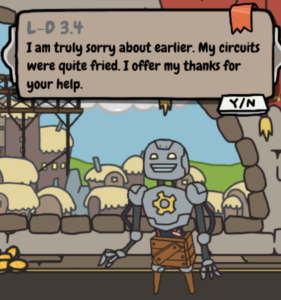
After helping the robot
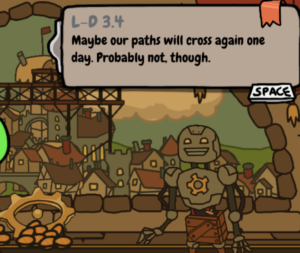
Received the golden cog
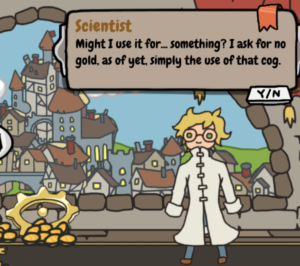
The scientist wants to use it

The gold-generating machine is built
The meetings do not only include various characters constantly pushing us to make decisions affecting the stories. There are many funny elements in the game that do not add up to the main story, however, they are humorous. For example, once every couple of days our grandma will ask for a dime for the newspaper, or a street cat will ask for food, or a random drummer will show you his cool new rhythm. These elements thin out the frequency of the important decisions to be made and provide the gap necessary to distribute the important decisions. This is important to not to squeeze the player and let him make the big calls once at a time.
The main premise of the game is facing the consequences of one’s decisions. Various different problems arise during the game which conveys different ideas. For example, if the kingdom expands too fast the king of trees will show up in our palace and complain about the destruction of the forests which underlines an environmental problem. On another occasion, we have to solve a really silly border problem between the kingdom of plants and the kingdom of sea animals who both claim a swamp as their own land. One another one, our workers will complain about their working conditions and will unionize and demand better conditions. There are many more examples such as these ones during the game that contain subtle messages. These subtle messages modify the priorities of a player in terms of the game objectives. They turn him into a king that does not just care about his kingdom but also is also cautious to cause an environmental problem or has respect for his workers’ rights. The unethical path is usually the easy path in the game but the friendliness of the characters and the trust relationship among the kingdom makes it harder for the player to take that path. Sometimes, the development pushes the player to make unethical decisions to make up for the previous unsuccessful ones:
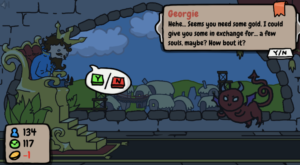
Do we want to sell souls?

People or gold?
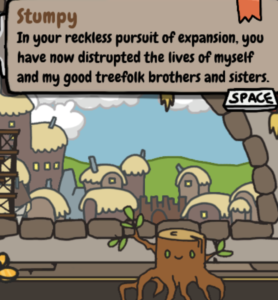
Ruined poor Stumpy’s home
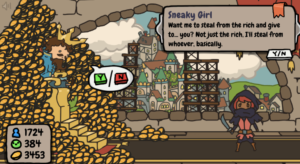
Do we want to hire a thief?
There is a constant trade-off majorly between the three features of the kingdom. Balancing and making the profitable decisions lead to a surviving and growing kingdom along with a fun playing experience.
If you want to play the game: